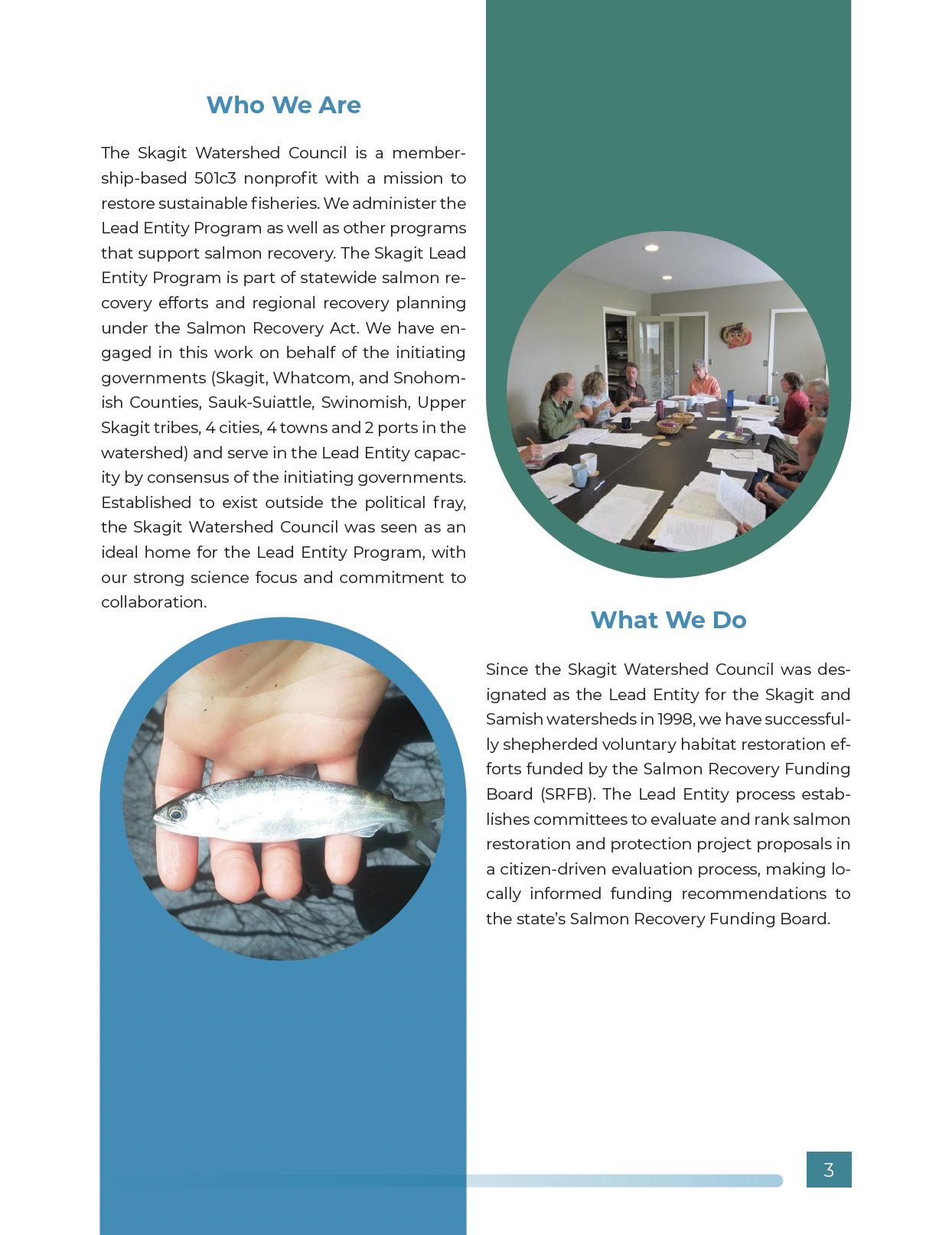It Takes a Village to Save our Salmon
In the Skagit, we are all united by the presence of our salmon. Whether as a symbol of our watershed, a target of valuable harvest or a source of local pride, these spectacular fish are deeply ingrained into who we are and where we live. Yet preserving the runs of these fish and protecting their existence takes hard work, long conversations and broad collaboration within a community that holds a wide spectrum of beliefs and perspectives.
The Skagit watershed is still a stronghold of salmon populations in the Salish Sea, acting as home to more than 50% of Puget Sound’s remaining ESA-listed wild Chinook population. As we know, salmon are an essential and primary source of food for our ESA-listed Southern Resident Orcas, a seasonal target and generational tradition for local fisherfolk, a keystone species of our greater ecosystem, and a spiritual cornerstone of local tribal identity. They are also a valued and coveted food source, harvested by everyone from local community members to large commercial operations. Yet these fish need our help and care to survive.
Op-Ed CTA
At the SWC, our collaborative work has delivered nearly three decades of restoration wins validated by measurable results. The evaluation is based on and guided by best-available science, including the Skagit Chinook Recovery Plan, which was adopted by the National Marine Fisheries Service in 2005. The extensive restoration work has continuously shown its value and worth, year after year, in protecting and preserving our salmon species and the habitat these valuable fish require to thrive.
In our increasingly divided times, consensus is often hard to find. Yet, by uniting governments, citizens and stakeholders—around a common local purpose of restoration and protection—the Watershed Council has functioned the way it was envisioned, as a collaborative effort that has brought us together, rather than tearing us apart. For the good of our community and the good of our fish, we urge the citizens of the Skagit to continue to work together to realize this vision—united in partnership for the preservation of our salmon in our Skagit.
Intro
Salmon work in the Skagit matters. The Skagit watershed is the stronghold of salmon populations in the Salish Sea, the source of more than 50% of Puget Sound’s remaining ESA-listed wild Chinook population. At the first meeting of the Skagit Watershed Council in February of 1997, we brought people together, some of whom had never met, and we started a conversation about salmon. That conversation continues today, nearly 30 years later, with experts from many backgrounds and many perspectives working together toward restoring sustainable fisheries in the Skagit.
Who We Are
The Skagit Watershed Council is a membership-based 501c3 nonprofit with a mission to
restore sustainable fisheries. We administer the Lead Entity Program as well as other programs that support salmon recovery. The Skagit Lead Entity Program is part of statewide salmon recovery efforts and regional recovery planning under the Salmon Recovery Act. We have engaged in this work on behalf of the initiating governments (Skagit, Whatcom, and Snohomish Counties, Sauk-Suiattle, Swinomish, Upper Skagit tribes, four cities, four towns and two ports in the watershed) and serve in the Lead Entity capacity by consensus of the initiating governments. Established to exist outside the political fray, the Skagit Watershed Council was seen as an ideal home for the Lead Entity Program, with our strong science focus and commitment to collaboration.
What We Do
Since the Skagit Watershed Council was designated as the Lead Entity for the Skagit and Samish watersheds in 1998, we have successfully shepherded voluntary habitat restoration efforts funded by the Salmon Recovery Funding Board (SRFB). The Lead Entity process establishes committees to evaluate and rank salmon restoration and protection project proposals in a citizen-driven evaluation process, making locally informed funding recommendations to the state’s Salmon Recovery Funding Board.
Our Approach
In approaching salmon recovery, our strength is in the relationships we have built over the decades. By acting as the local Lead Entity, the Skagit Watershed Council’s inclusive, team-work-driven approach has enabled the Lead Entity Citizen Committee to successfully review and rank 230 projects, recommending 218 for SRFB funding totaling $98 million over 20 years (averaging $3.9 million per year). An additional 12 of the 230 reviewed projects were referred out to other funding sources for a total of $32 million by those different funding sources.
